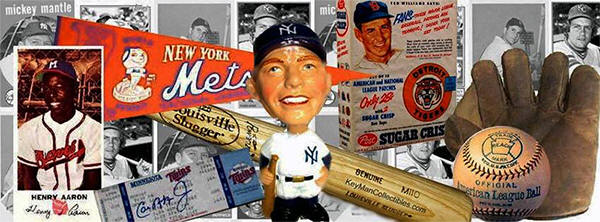| |
As Advertised in the 1890 Spalding's
Official Base Ball Guide for .25 cents;
the Spalding Scoring Tablet No. 2, is "A
simple, convenient and accurate device
for the record of runs and outs; can be
easily carried in the vest pocket."
Made by Whitehead & Hoag, a company
that specialized in advertising
novelties, this was the first year the
scoring tablet was offered by Spalding.
These Scoring tablets were also made
for a number of companies that
included; Reach, Wright & Ditson &
Victor, Newspapers that advertised
their sports page, such as The Los
Angeles Times, New York Press, Chicago
Tribune, and the Dallas News.
The first design was sold from 1890 to
1909. The top reads "SPALDING'S SCORING
TABLET" It had three indicators, two
for "RUNS" - "HOME CLUB" top left,
"VISITING CLUB" top right, and ĶUTS"
centered at the bottom. The opposite
side has the Spalding Baseball logo,
centered, and "THE WHITEHEAD & HOAG CO.
NEWARK NJ" on the bottom left.
There are two variations of the next design, that was used from 1910 to
1935. The earlier version sold up to
about 1918, and pictured with a stock
illustration in all the catalog ads up
to 1935; has ' HOME CLUB" at the
top, and "VISITING CLUB" at the bottom.
The Scoring tablet had 7 indictors; 3
indicators at the top "HIT'S, RUNS,
ERRORS" at the top, and 3 indicators at
the top "HIT'S, RUNS, ERRORS" at the
bottom. On the far right centered is an
OUT" indicator. Early variations of the
1909-1918 tablet has the Spalding
Baseball logo on the opposite side,
with later variations having the
Spalding Double Bordered baseball logo.
Some time around 1919 an eighth indicator was added to the far left for
"INNINGS." The opposite side has the
Spalding double bordered baseball logo,
with "REG. U.S. PAT. OFF." below.
The older 1890-1909 tablets have the
lowest value. Not knowing the age of
these tablets, collectors don't find
the tablet with just three indicators,
as interesting as the later tablets
made with 7 or 8. Less demand, lower
value. Both the 1910-1918 with 7
indicators, and the 1919-1935 with 8
indicators have equal demand, and
sell at the same prices.
|
|


